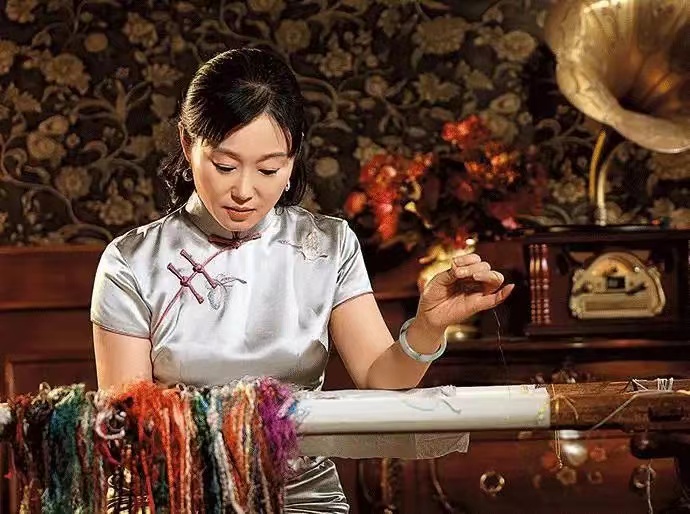
Yao Huifen, female, was born in November 1967 and is of Han ethnicity. She is a representative inheritor of Suzhou embroidery, which is among the first batch of national intangible cultural heritage items. Yao Huifen is a Suzhou embroidery artist, a national-level representative inheritor of the national intangible cultural heritage item (Suzhou embroidery), a senior industrial arts and crafts artist at the research fellow level, an expert enjoying special government allowances from the State Council, one of the first batch of Chinese embroidery art masters, a Chinese master of industrial arts and crafts, a renowned craftsman in Jiangsu Province, and an advanced individual in the protection of Chinese intangible cultural heritage. Having been engaged in the art for nearly 25 years, she is a national senior industrial arts and crafts artist and has won honorary titles such as “Famous Industrial Arts and Crafts Figure in Jiangsu Province” and “Young and Middle-aged Expert with Outstanding Contributions in Jiangsu Province”. She runs her own embroidery studio, the Yao Huifen Embroidery Art Museum. Her works have successively won the gold award in three consecutive sessions of the “Exhibition of Fine Works by Chinese National-level Masters of Industrial Arts and Crafts”. On May 31, 2022, she was recognized as a representative inheritor of Jiangsu Province’s national intangible cultural heritage in 2021.


About the author
The Parade of the Giant Mecha Qilin Beast in the Scenic Area during the May Day Holiday
Mecha parade. In the Qilin Scenic Area! A popular parade installation! A brand-new work of the Senbala Puppet Troupe.
Yiping Meng April 22, 2025
The genuine children’s play “The Howling Circus of the Dream Master” by Jiuhui
Staffing: 8 people The total duration of the play is 30-40 minutes, and the interaction can last up to one hour. Character Shapes: Head of the Horse Troupe / Female Witch / Little Skeleton / Zhuanzhuan / Bibi Bo / Bobi Bi Plot Introduction of "The Howling Circus of the Dream Master": Adapted from the famous movie "The Greatest Showman", the story tells the journey of a circus troupe's establishment in a light-hearted and humorous way. There is the nonsensical head of the horse troupe, the magical Zhuanzhuan, the indistinguishable twin sisters, the mysterious witch, and so on. Through the forms of music and dance, scenes of funny and ridiculous stories are presented.
Yiping Meng April 22, 2025
The Dopamine-themed Fan-loving Family Grand Parade
The Dopamine-themed Grand Parade Performance
Yiping Meng April 22, 2025
Fantasy Cruise Stage Play with the Theme of Chinese-style Mythology: Beasts of the Mountains and Seas
The First Large-scale Chinese-style Mythology-themed Cruising Magic Stage Play in Guangdong Province *The Record of Auspicious Beasts in the Mountains and Seas* Auspicious beasts appear during the Spring Festival Carnival. They travel thousands of miles to bring auspiciousness, And send sincere blessings wholeheartedly. #Classic of Mountains and Seas
Yiping Meng April 22, 2025
The Dance Drama *The Twenty-four Solar Terms: Twelve Sounds among Flowers* by Beijing Modern Dance Company
• The dance drama was created by Gao Yanjinzi, the artistic director of Beijing Modern Dance Company and a renowned dancer. • *The Twenty-four Solar Terms: Twelve Sounds among Flowers* by Beijing Modern Dance Company, with the charm of meaningful poems, the beauty of legends, and the fun of folk customs, leads the audience in the modern dance theater to explore the past and the present through the tunnel of time and space, and to feel the pulse of nature. • Taking the twenty-four solar terms as the carrier, and seeing the world through the eyes, ears and emotions of flowers, it harvests the stories of different living beings during the blooming and withering of flowers in twelve segments, and interprets the romance of the cycle of the four seasons. Performance duration: 90 minutes
Yiping Meng April 22, 2025
*Three Periods of Rain* by Beijing Modern Dance Company
It was created by Gao Yanjinzi, the artistic director of Beijing Modern Dance Company and a renowned dancer. • It showcases Eastern aesthetics through dance and has been successfully performed over 200 times both at home and abroad. • It is a commissioned work of the Venice Biennale. It has caused a great sensation in the Italian art circle. Every performance was sold out. It has amazed Western audiences with the experience of Eastern aesthetics and aroused their interest in Eastern philosophy. The artistic director of the Venice Biennale called it "magnificent and beyond imagination". • Media comment: Beijing Modern Dance Company is an astonishing chapter in the history of Chinese dance. ---- People's Daily Performance duration: 60 minutes
Yiping Meng April 22, 2025
Related
Liu Mingzhi, the inheritor of the Hundred Year Intangible Cultural Heritage Dehua Porcelain Project
Liu Mingzhi, a representative inheritor of Dehua porcelain firing techniques at the municipal level, was born in Dehua, the porcelain capital of China, in 1973. He is a master of traditional Chinese arts and crafts, a senior arts and crafts artist, a senior ceramic sculpture technician, and a national first-class artist. He grew up in Tuban Village, Xunzhong Town, Dehua County. This village is surrounded by mountains on both sides and water on the other side, with fresh air and beautiful scenery. In his childhood, painting in the green mountains and water and kneading clay with rare earths became a great pleasure in his life, which had a profound impact on his path towards porcelain carving art Liu Mingzhi's career began in 1990, when he graduated from high school and entered the century old folk brand "Yunyu Porcelain Village" in […]
lihao April 22, 2025
Master of Intangible Cultural Heritage Kiln Construction – Sun Jianxing
Jian Kiln, one of the famous kilns of the Song Dynasty, also known as "Jian'an Kiln" and "Wuni Kiln", is distributed in Jianyang Shuiji Kiln, Nanping Chayang Kiln, and Mount Wuyi Yulingting Kiln. The three kiln sites are collectively called Jian Kiln System. Famous for firing black glazed porcelain. Small bowls are the most common, with black mud colored fetal bones and multiple strip-shaped crystal patterns on the glaze surface, as fine as rabbit hair, known as "rabbit hair cups". There are also those that are burned into "Partridge Spots" and "Silver Star Spots", which are unique and beautiful. Underglaze grain is a decoration made by using the acidic traces formed by acidic glaze materials. Due to the upward firing of kiln ceramics, the glaze water hangs down, and the finished glaze color at the mouth edge is light. Due […]
lihao April 22, 2025
Master of Intangible Cultural Heritage Huimo – Zhou Meihong
Huimo The mellow smoke is refined for a long time, like a hammer in a pestle and mortar. Ink is one of the cultural genes engraved in the blood of China. Chinese literati often refer to themselves as "ink masters" and their works as "ink marks". The phrase "those who have good ink are like famous generals who have good horses" expresses the importance attached to ink. The world's ink industry is led by Huizhou ink. As one of the Four Treasures of Chinese Literature, Huizhou ink is light to pick, clear to grind, fragrant to smell, as strong as jade, and silent to study. When written on paper, a little bit is like lacquer, and it has been preserved for thousands of years. Throughout history, literati and ink masters have regarded it as a beloved object. Tracing back to […]
lihao April 22, 2025
Liu Zhongping, the inheritor of the centennial intangible cultural heritage woodblock New Year paintings
Woodblock New Year paintings are a traditional folk art form with a long history in China, spanning over a thousand years. It originated during the Wanli period of the Ming Dynasty, initially rising in the northern plains of Beijing, Tianjin, and other places, and later spreading to southern regions such as Shanghai, Suzhou, Hangzhou, and so on. Woodblock New Year paintings reached their peak in the mid to late Qing Dynasty, becoming decorative items for festivals and reflecting the rich content of Chinese folk society. Woodblock New Year paintings are made on wooden boards through manual carving and printing. The content usually includes images of gods, immortals, Buddhas, old events, folk customs, nature, animals and plants, as well as auspicious words and blessings. Its artistic style is strong and atmospheric, with extremely high historical and artistic value. Woodblock New […]
lihao April 22, 2025
Zhao Jin Baizhi, the fourth generation inheritor of the century old intangible cultural heritage of Beijing embroidery
Jing embroidery, also known as palace embroidery, is a traditional embroidery technique in ancient Chinese courts with a long history. It originated in the Tang Dynasty, flourished during the Song and Liao dynasties, and reached its peak in the Ming and Qing dynasties. Jing embroidery, with its exquisite skills and unique aesthetic style, has become one of the Eight Wonders of Yanjing. Especially in the Qing Dynasty, Jing embroidery was widely used in palace costumes and decorations, demonstrating high artistic value and cultural connotations. Beijing Embroidery has a variety of stitches, inheriting the essence of Suzhou Embroidery and other skills, including Qi stitch, Wo stitch, and set stitch. The combination of these stitches can produce rich lines and patterns, showing unique artistic effects. Its color application is exquisite, with five colors as its characteristic, emphasizing the coordination and unity between […]
lihao April 22, 2025
Master Xu Jianping, a century old intangible cultural heritage redwood master
Master Xu Jianping Representative inheritors of Ming style furniture production techniques for the first batch of national intangible cultural heritage projects Master of Arts and Crafts in Jiangsu Province In 1999, he served as the chief designer and producer of the restoration of the Hong Xiuquan Heavenly Palace at the Nanjing Modern History Site Museum (inside the Nanjing Presidential Palace), which is a national key cultural relic protection unit. In 2000, served as the chief designer and producer of the restoration of the Manchurian Imperial Palace in Changchun (a national key cultural relic protection unit). In 2000, served as the chief designer and producer of the restoration of Hu Xueyan's former residence in Hangzhou (a cultural relic protection unit in Zhejiang Province). In 2001, served as the chief designer and producer of the restoration of Wenzhou Ruyuan (a cultural relic […]
lihao April 22, 2025



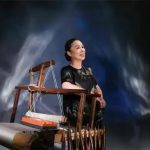

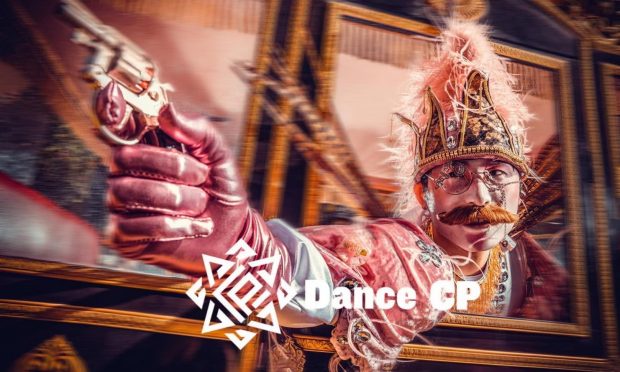




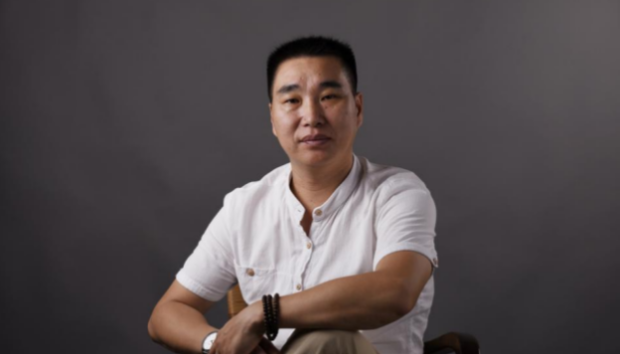


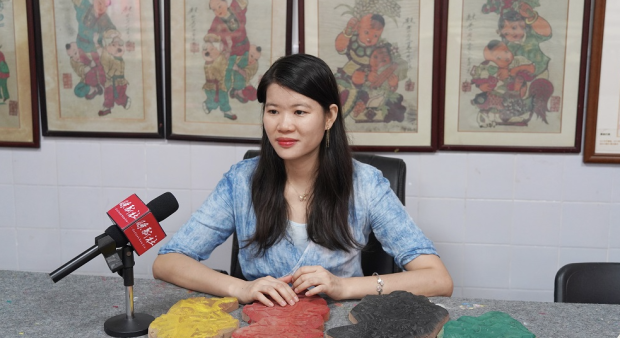

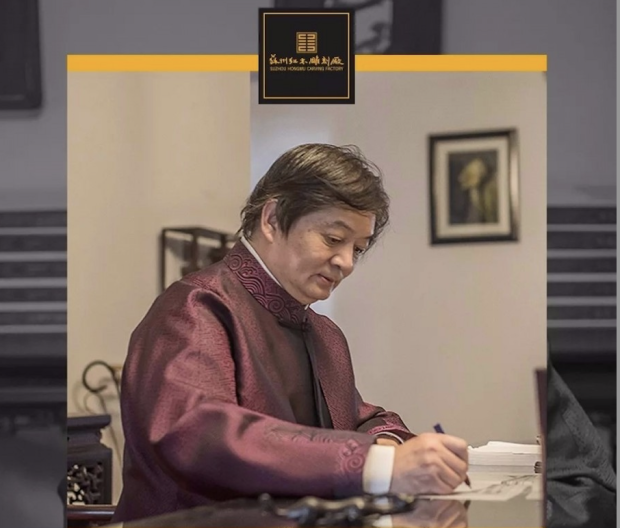

Be the first to leave a comment